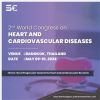Cardiovascular disease is significantly underdiagnosed in women compared to men. The widely used Framingham Risk Score estimates the likelihood of developing cardiovascular disease over a decade, factors in age, sex, cholesterol levels, and blood pressure.
Researchers from the U.S. and the Netherlands used a comprehensive dataset to develop more accurate cardiovascular risk models. They also assessed the extent of underdiagnosis in women compared to men. Their findings, published in Frontiers in Physiology, shed light on crucial insights.
Skyler St. Pierre, a researcher at Stanford University's Living Matter Lab, highlighted the fact that using sex-neutral criteria fails to adequately diagnose women. Implementing sex-specific criteria could mitigate this underdiagnosis. The researchers also identified electrocardiogram (EKG) as the most effective tool for detecting cardiovascular disease in both genders.
Discrepancies in diagnosis arise from anatomical differences between female and male hearts. For instance, female hearts are smaller with thinner walls. However, diagnostic criteria for certain heart conditions remain uniform across genders, necessitating disproportionately greater changes in women's hearts to meet the same risk criteria as men.
Quantifying the underdiagnosis of women revealed significant disparities. St. Pierre noted, "Women are twice as likely to be underdiagnosed for first-degree atrioventricular block (AV) block and 1.4 times more likely for dilated cardiomyopathy, compared to men." This trend extends to other heart disorders as well.
To refine risk prediction models for both sexes, the researchers incorporated four additional metrics overlooked by the Framingham Risk Score: cardiac magnetic resonance imaging, pulse wave analysis, EKGs, and carotid ultrasounds. Leveraging data from over 20,000 individuals in the U.K. Biobank, they utilised machine learning to identify new, significant features enhancing early disease detection.
EKGs emerged as the most impactful metric for identifying cardiovascular disease in both men and women. Nonetheless, the researchers stressed the continued importance of traditional risk factors in assessment. They suggest a two-stage screening approach, starting with a basic survey of traditional risk factors and followed by EKG screening for higher-risk patients.
This study marks a crucial step in reevaluating heart disease risk factors, paving the way for personalised medicine. By harnessing new technologies, researchers aim to enhance risk prediction and ultimately improve cardiovascular health outcomes for all.
Source: Frontiers in Physiology
Image Credit: iStock























